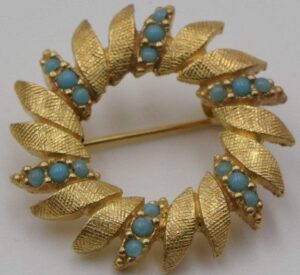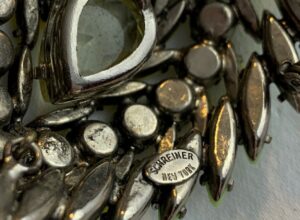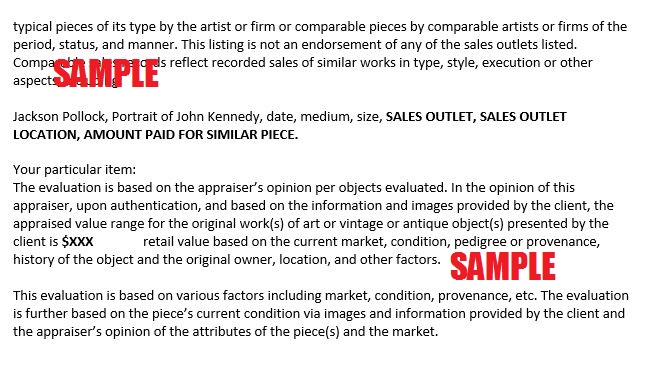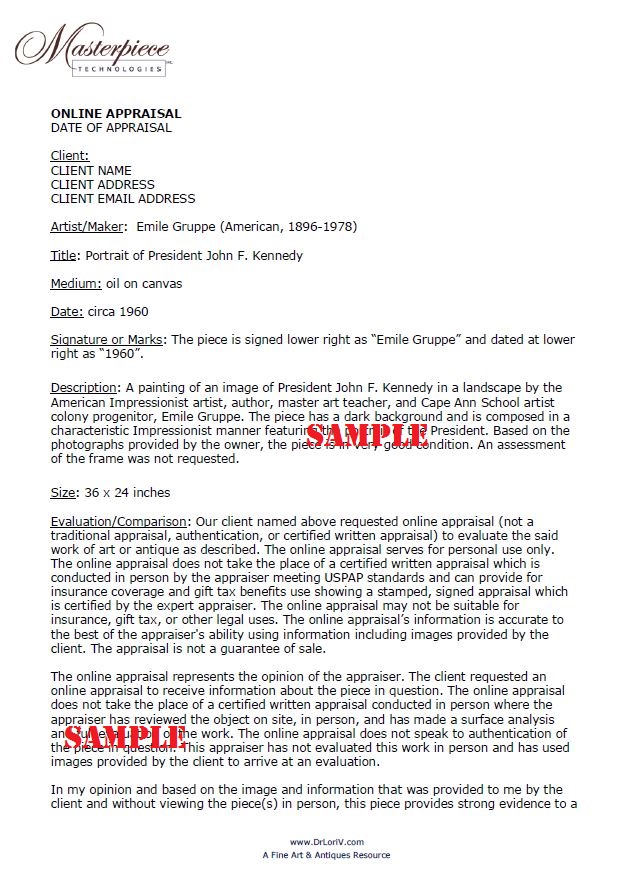
by Dr. Lori Verderame
In this series of articles, I provide this list of Costume Jewelry Marks and designers. I am not only highlighting the most sought-after designers, and there are many, but also showing their marks so you can buy them at the thrift store, yard sale, flea market or assemble them for your own valuable costume jewelry collection.
Here is some general information about marks that you should keep in mind. Every costume jewelry lover or collector should know that prior to 1955, jewelry designers, makers, and manufacturers could not protect their design under copyright law. So, once jewelry designers were able to use copyright protection under the law to protect their designs, the copyright symbol was added to many costume jewelry maker’s marks. So, any piece marked with a copyright symbol dates that piece to after 1955.
In addition, there are other numbers or marks on pieces of costume jewelry that you should learn to recognize. For instance, some costume jewelry firms use design patent numbers on their pieces. These numbers usually begin with the letter D for Design Patent. Other numbers which are sometimes visible on piece of costume jewelry represent or are known as utility patents. These are the patent numbers associated with the mechanisms like earrings’ hinges, box clasps, etc. used on costume jewelry. There is some basic info that I wanted to share, now onto some specific costume jewelry designers and their marks.
Ciner costume jewelry mark
The first costume jewelry designer on this list of costume jewelry marks and designers is Ciner. Emmanuel Ciner was first a fine jeweler and then moved into the costume jewelry arena. His sons, Charles and Irwin helped their father establish the costume jewelry business in the late 1920s-1930s as a result, in part, of the Great Depression. The costume jewelry pieces by Ciner were based on high-end fine jewelry styles. Known for classic styles, fine materials, bold pieces, and animal bracelets, Ciner pieces were sought after in the costume jewelry realm. Like Matisse, Renoir, Kenneth Jay Lane, and other costume jewelry design firms, Ciner was the one to wear.
By the post World War II period of the late 1940s, Ciner jewelry was introduced in high end boutiques in major cities. For instance, celebrity mother of Zsa Zsa and Eva Gabor and socialite in her own right, Jolie Gabor carried Ciner jewelry in her New York City boutique on Madison Avenue. Gabor sold Ciner to the likes of celebrities, debutantes, models, socialites, and royals. Two major examples: Elizabeth Taylor and Queen Sofia of Spain both wore Ciner.
Throughout the mid century modern period, Ciner made costume jewelry pieces that would attract the most discriminating fashionistas. The firm continued to flourish into the late 1970s when Pat Ciner Hill, the granddaughter of Emmanuel Ciner took over the company.

Ciner is one of the costume jewelry firms that provided marks on their pieces once the firm was established in the marketplace. Early Ciner pieces were unsigned, circa 1930s, and were often set using sterling silver. While the style of a particular Ciner piece is a major clue to dating a specific piece, by the 1940s, Ciner pieces were clear marked in a straightforward manner with simply the Ciner name. The Ciner mark could be easily found with a copyright symbol on characteristic Ciner pieces. By the 1960s, Ciner pieces were easy to spot because they utilized a matte toned gold plating for their costume jewelry pieces. This changed to a shiny and bright style of gold plating in the 1980s-1990s which was a sign of the times. Ciner is one costume jewelry designer that you should have on your list to collect.
Eisenberg
Jonas Eisenberg was an Austrian native who relocated to Chicago, IL in the early 1900s. His costume jewelry firm was a big name in the industry however when he started out costume jewelry was the furthest thing from his mind. In fact, Jonas Eisenberg started his business, and a successful business at that, as a women’s clothier in the early decades of the 20th Century. When the tides changed in women’s clothing, Eisenberg moved into jewelry designing.
Eisenberg costume jewelry designs were known for their high quality, good materials, and fine designs. Eisenberg like many high-end costume jewelry firms hired talented designers to create their pieces. At Eisenberg, Ruth Kamke was the lead designer at the firm. Kamke designed Eisenberg pieces for decades. She was responsible for designing all of the Eisenberg Original line of costume jewelry pieces that were made after 1930 as well as pieces made until 1972 including the popular Eisenberg Ice line of costume jewelry.
Eisenberg was known for it classic styles as well as its whimsical offerings of costume jewelry. Styles like Art Deco, Art Moderne and others were offered to clientele by Eisenberg. Figural mermaids, dancers, animals and insects were the subject of many Eisenberg earrings, brooches, bracelets, and necklaces. Color combinations that contrast or complement were also integrated beautifully in the designs of Eisenberg in the mid 20th Century. Pinks and purple set crystals were the focus of many cluster earrings, clips, and brooches. Light and dark colored faceted faux stones were all the rage. Eisenberg highlighted, in their designs, Swarovski crystals, dyed onyx, calcite, jade, enamel, glass beads, faux pearls, and rhinestones. Eisenberg Ice was a line that highlighted and looked very much like diamonds and the fashion idea surrounding the wearing of diamonds.
When it comes to marks, Eisenberg pieces were easy to spot by their mark. While some Eisenberg pieces were unmarked, the majority of pieces by the Eisenberg firm retained a clear and identifiable mark. The mark related directly to the Eisenberg firm’s name, however, the mark changed over the years.
From circa 1935 to 1948, Eisenberg used a script or cursive “E” or “Eisenberg Original” to mark its pieces of costume jewelry. From 1945 to 1958, the bold all capital lettered “EISENBERG” mark would be found. After 1955, Eisenberg added the all important copyright symbol to its firm name mark to protect its designs from copyright infringement. By the late 1950s to the 1970s, the firm changed to using an Eisenberg paper hang tag which often times makes it problematic to identify a mid 20th century Eisenberg piece. Eisenberg pieces are recognizable by its style, however, marks make it easy for collectors to confirm the authenticity of an Eisenberg piece.
In the 1960s to the 1970s, there was a new mark introduced for a new line of costume jewelry pieces based on the high end fashion pieces of the elite class called “Eisenberg Ice”. Suggestive of high end diamond jewelry in the costume jewelry manner, Eisenberg Ice pieces were clearly marked and immediately recognizable. They were very popular with clients, too. Eisenberg, like other costume jewelry designers and firms, occasionally used sterlin silver in their settings. These pieces were marked “Eisenberg sterling.” Like the costume jewelry pieces, the original Eisenberg & Sons blue velvet boxes are also sought after and valuable with collectors and resellers.
Kramer costume jewelry mark
Louis Kramer founded Kramer Jewelry Creations, Inc. in New York City in 1943. On this list of costume jewelry marks and designers, Kramer remains one of the most popular costume jewelry designer names in the world today. The company was best known for their parures or sets and their demi-parures of high-quality rhinestones and Austrian crystals and glass. Art glass was incorporated into Kramer’s costume jewelry designs. Kramer was one of the many firms that designed and manufactured jewelry for other companies, specifically Kramer made pieces for Dior in the 1950s and 1960s and for Geoffrey Beene in the 1970s. One of the most successful advertising campaigns and jewelry designs for Kramer, or Kramer NY as it is known in the industry, was the Diamond Look line. These pieces were comprised of high quality rhinestones that were designed in a manner similar to fine jewelry pieces that featured real diamonds. On this list of costume jewelry marks and designers, the Kramer mark is straightforward and easy to find on many of its pieces of costume jewelry from necklaces to earrings.

Kramer’s pieces were clearly marked and many of the firm’s diverse lines were also marked. The traditional marks for Kramer included Kramer, Kramer of NY, and Kramer of New York. You could find these marks on most pieces of Kramer costume jewelry. However, other marks were used by Kramer too. These marks were less common but also authentic to the New York costume jewelry design firm. Rarely used but valuable pieces by Kramer include those marked with Kramer Austria and Kramer sterling noting those pieces made abroad or those pieces made using sterling silver. The Diamond Look was a line of costume jewelry pieces made by Kramer in the 1940s and 1950s. The Golden Look line was introduced in the 1950s and continued into the 1960s. Also in the 1960s, a new designer joined the Kramer firm from a competing firm and he introduced a popular line of costume jewelry items called the Amourelle line. The famed designer’s name was Frank Hess and he had been one of the top designers at the Miriam Haskell firm for some time. Similarities between the two firms’ costume jewelry offerings during this era are easy to spot.
Miriam Haskell
Speaking of fine costume jewelry designers on this list, Miriam Haskell takes its place among the mighty. Haskell was a business woman first and a designer second. Haskell didn’t design the bulk of her firm’s offerings in costume jewelry but she did hire fine designers, include Frank Hess and others, and was well versed in the methods to grow her costume jewelry business.
The Miriam Haskell firm was established in the 1920s. Her pieces were worn in the US and in many countries abroad. Miriam Haskell pieces were worn by celebrities on the Broadway stage and in other theatres as well as on the big movie screen. This exposure among celebrities helped Miriam Haskell pieces and the firm itself to grow in popularity and desirability.
Haskell pieces were known for their abundance of high quality simulated pearls, faux pearls, seed pearls, and large baroque style pearls. Pearls were the mainstay for Miriam Haskell costume jewelry pieces followed by the Haskell designers’ use of colorful rhinestones and colorful imported glass beads. Haskell pieces were largely hand made, constructed from individual components, using quality production methods. Components of Haskell jewelry pieces were nicely finished on the front and back, wired together for strength after repeated wear and use, and were often back strung (back stringing) to offer a high quality finished look overall.
Frank Hess was a well known and respected lead designer at Miriam Haskell until he moved to the Kramer firm. Hess was followed by designer Robert Clark who worked for Miriam Haskell until late 1960s. After which time, Lawrence Vrba joined the firm and introduced the very popular Egyptian revival jewelry of the 1970s. Vrba also integrated new and unusual materials into his designs of various woods, sea shells and natural stones. After Vrba, Millie Petronzio came to the firm and her designs focused on reviving some of Haskells most traditional designs and styles. While Miriam Haskell, like many costume jewelry firms, go through changes in design and popularity, by the late 20th Century the quality of Haskell pieces faltered. In my opinion, some of the Haskell pieces of the late 1900s failed to show the same design innovation or quality materials.

Like any good business person, Miriam Haskell knew that marking her firm’s designs would prove important. When it comes to marks on Haskell pieces, there were not many distinguishing marks on hand made Haskell pieces for the first few decades of the firm’s success, circa 1920s-late 1940s. By the late 1940s, circa 1947-1948, Miriam Haskell marked her pieces with her name in a circle stamped into the metal of each piece. A horseshoe mark was used from 1948 to 1950 for Miriam Haskell and after circa 1950, the famous oval cartouche housed the name Miriam Haskell which served as the firm’s long standing and recognizable mark.
Schreiner costume jewelry mark
Schreiner is the last designer on this list of costume jewelry marks and their designers, which is neither exhaustive or comprehensive (there will be more lists to come). Schreiner pieces feature a layered construction with many, many elements. Schreiner pieces are known for designed clustered with materials, beads, faux stones and faux pearls in color schemes that attract many clients. They were known for metal wire hooks and eyes, hand made settings, prong settings, crimpled setting cups to hold stones in place, and the list goes on. Schreiner is known for its use of art glass in their costume jewelry and stones of various colors.
Henry Schreiner’s company was established in 1932. Schreiner was first known for sterling silver and marcasite pins with monogrammed initials popular in the period. As his firm grew, Schreiner featured his jewelry in magazines, advertisements, and on the models of fashion designers of the day. Dior and Adele Simpson among others choose Schreiner costume jewelry to adorn their clothing fashions.
Designers in the firm included Henry Schreiner, and later–after his 1954 death–his daughter Terry Schreiner Albert. Henry’s son in law, Ambros Albert, also grew to into a lead position as a fine designer at the firm in the mid 20th Century. Ambros Albert was a design innovator. He used quality materials and invented new designs that featured high end glass, crystals, rhinestones, etc. and integrated these pieces into inverted settings and made attractive color combinations of various materials. The couple ran the Schreiner costume jewelry business starting in 1954 and continued doing so until the mid 1970s.
Exposure made Schreiner a household name in the mid 20th Century. Schreiner costume jewelry was stocked in display cases at some of the finest department stores of the mid to late 20th Century such as Henry Bendel, Saks Fifth Avenue, G. Fox & Company, Macy’s, Lord & Taylor, Neiman Marcus to name a few. Marks for Schreiner pieces are similar to those marks on Kramer pieces as they note the maker and the location of the costume jewelry designer’s headquarters. Look for Schreiner pieces marked as “Schreiner”, “Schreiner New York” and as “Schreiner N.Y.C.” on pieces made by the firm. On this list of costume jewelry marks and designers, the locations where these items sold in their heyday also comments on the popularity of specific costume jewelry designers.

To tell an unmarked Schreiner piece, look for construction examples. For instance, Schreiner used unfoiled inverted set stones (set with a faceted point up instead facing downward), unusual stones and glass in various shapes, and polished lucite and other plastics, etc.
Schreiner pieces were also attractive to buyers because of their unique designs and versatility. Schreiner gave clients more bang for their buck in the form of interchangeable pendants and brooches, security clasps, and classic statement pieces that can be mixed and matched with other pieces of similar style or color schemes.
I will share more lists of costume jewelry designers and their marks in other articles and videos.
Watch videos on my YouTube channel where I share more tips about list of costume jewelry marks and their designers. I can appraise your costume jewelry marks from photos or you can show me your costume jewelry pieces during a video call.


